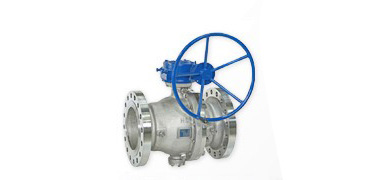
Applications that can be characterized as industrial fluid handling or process control are vast in number and variety, each being highly specialized and customized to specific circumstances. It’s no surprise that, given the array of potential application conditions, there are countless different valve arrangements, types, and technologies to choose from.
Ball valves, like many valve types, are named for their closure mechanism. A spherical shaped element is placed in the fluid flow path, with the ability to rotate its position around an axis. The axis is a shaft or other device that connects to an actuator on the exterior of the valve and flow path. The actuator can be a simple handle or an element of a valve automation system. The “ball” in the ball valve has an opening through its center, usually round to mimic the shape of the connected pipe. As the ball is rotated, the opening aligns with the inlet an outlet of the valve body, allowing fluid to pass. A counter-rotation that aligns the opening with the sides of the valve body, away from the flow path, stops the fluid flow. So, compared with other valve technologies, when would a ball valve be a preferred application choice? Here are some points to consider.
Application advantages of ball valves:
What considerations might be cause to consider a different valve type?
These comments are general in nature and there are some specialized ball valve designs that have overcome some of the general disadvantages noted here. Have a conversation with a valve specialist about your application and benefit from their experience and knowledge.